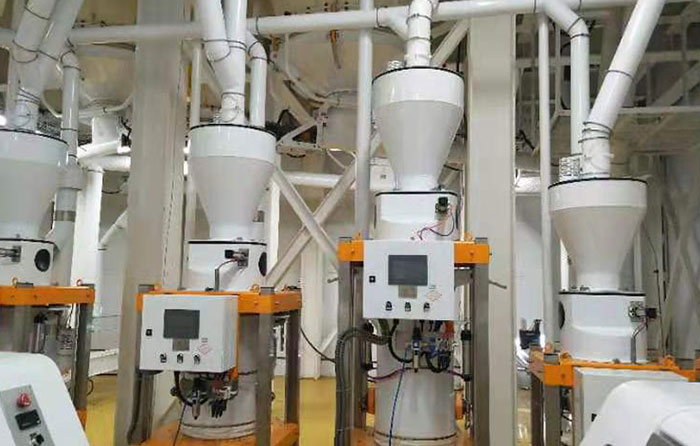Introduction to Wheat Flour Milling Plant: A Comprehensive Guide
Wheat flour milling plays a crucial role in the production of one of the world's most staple food items—flour. Wheat flour is widely used in various culinary applications, such as baking bread, pastries, and other wheat-based products. Understanding the process and components of a wheat flour milling plant is essential for those involved in the milling industry or anyone interested in learning about the production of flour. In this comprehensive guide, we will provide an introduction to wheat flour milling plants, covering the key aspects of their operation.

Wheat Cleaning: The first step in the wheat flour milling process is wheat cleaning. The harvested wheat undergoes thorough cleaning to remove impurities like dirt, stones, and other foreign materials. This cleaning process ensures the quality and purity of the wheat before it enters the milling process.
Wheat Conditioning: After cleaning, the wheat goes through a conditioning process. This involves adding water to the wheat to achieve the desired moisture content. Conditioning helps in softening the outer layer of the wheat, known as the bran, which eases the separation of bran from the endosperm during milling.
Wheat Milling: The milling process involves the grinding of wheat kernels into flour. It typically consists of several stages, including breaking, sizing, reduction, and purification. In the breaking stage, the wheat kernels are passed through rollers or grinders to break them into smaller particles. The sizing stage involves separating the different components of the wheat kernel based on particle size. In the reduction stage, the endosperm is ground into finer particles to produce flour. Finally, in the purification stage, the flour is refined further to remove any remaining impurities.
Flour Classification: Once the milling process is complete, the resulting flour is classified based on its particle size and quality. Flour classification helps in determining the suitable applications for different types of flour, such as bread flour, all-purpose flour, or cake flour. Each type of flour has specific characteristics and gluten content, making it suitable for different culinary purposes.
Quality Control: Quality control is a crucial aspect of wheat flour milling plants. Various quality parameters, such as moisture content, protein content, gluten strength, and ash content, are monitored to ensure consistent and high-quality flour production. Quality control measures involve regular testing and analysis to meet industry standards and customer requirements.
Packaging and Storage: After the flour has been milled and classified, it is packaged for distribution and storage. Packaging ensures proper protection and preservation of the flour. Common packaging options include bags, sacks, or bulk containers. Additionally, proper storage conditions, such as temperature and humidity control, are essential to maintain the flour's quality and extend its shelf life.
Industry Trends and Challenges: The wheat flour milling industry is subject to various trends and challenges. Factors such as technological advancements, changing consumer preferences, and market demands influence the industry dynamics. Staying updated with the latest trends and overcoming challenges, such as market competition and ensuring food safety, are crucial for the success of wheat flour milling plants.
Sustainability and Efficiency: As with any industry, sustainability and efficiency are important considerations in wheat flour milling plants. Implementing sustainable practices, such as reducing energy consumption, optimizing water usage, and minimizing waste generation, can contribute to a greener and more environmentally friendly milling process. Embracing efficient technologies and practices can also improve productivity and reduce operating costs.
In conclusion, a wheat flour milling plant plays a vital role in transforming wheat kernels into flour, a fundamental ingredient in many food products. Understanding the various stages of wheat cleaning, conditioning, milling, flour classification, and quality control is essential for those involved in the industry. By following sustainable practices and embracing efficiency, wheat flour milling plants can contribute to a reliable supply of high-quality flour while minimizing their environmental impact.
473
0
0


Comments
All Comments (0)